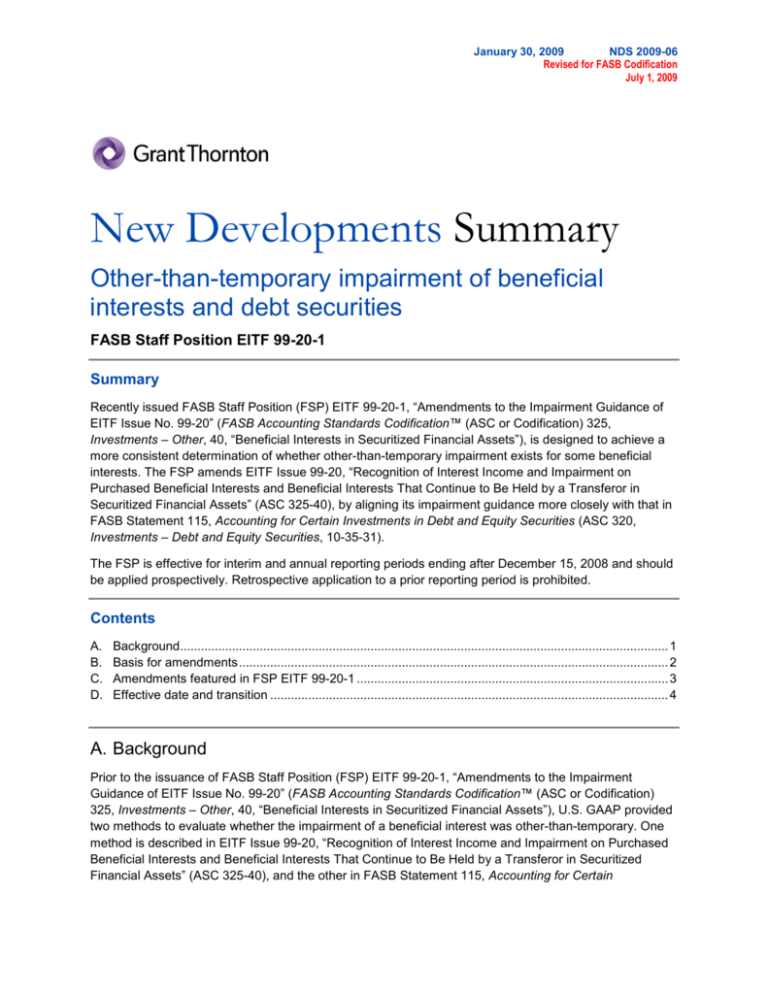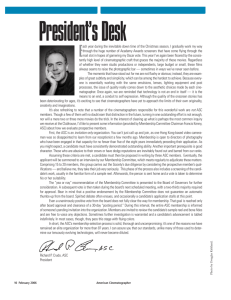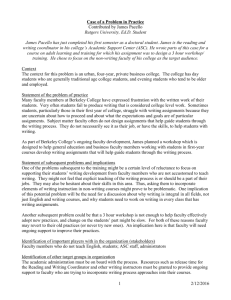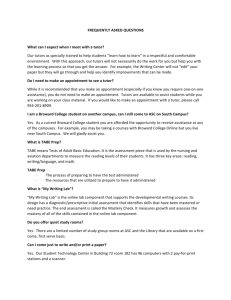
January 30, 2009
NDS 2009-06
Revised for FASB Codification
July 1, 2009
New Developments Summary
Other-than-temporary impairment of beneficial
interests and debt securities
FASB Staff Position EITF 99-20-1
Summary
Recently issued FASB Staff Position (FSP) EITF 99-20-1, “Amendments to the Impairment Guidance of
EITF Issue No. 99-20” (FASB Accounting Standards Codification™ (ASC or Codification) 325,
Investments – Other, 40, “Beneficial Interests in Securitized Financial Assets”), is designed to achieve a
more consistent determination of whether other-than-temporary impairment exists for some beneficial
interests. The FSP amends EITF Issue 99-20, “Recognition of Interest Income and Impairment on
Purchased Beneficial Interests and Beneficial Interests That Continue to Be Held by a Transferor in
Securitized Financial Assets” (ASC 325-40), by aligning its impairment guidance more closely with that in
FASB Statement 115, Accounting for Certain Investments in Debt and Equity Securities (ASC 320,
Investments – Debt and Equity Securities, 10-35-31).
The FSP is effective for interim and annual reporting periods ending after December 15, 2008 and should
be applied prospectively. Retrospective application to a prior reporting period is prohibited.
Contents
A.
B.
C.
D.
Background............................................................................................................................................. 1
Basis for amendments ............................................................................................................................ 2
Amendments featured in FSP EITF 99-20-1 .......................................................................................... 3
Effective date and transition ................................................................................................................... 4
A. Background
Prior to the issuance of FASB Staff Position (FSP) EITF 99-20-1, “Amendments to the Impairment
Guidance of EITF Issue No. 99-20” (FASB Accounting Standards Codification™ (ASC or Codification)
325, Investments – Other, 40, “Beneficial Interests in Securitized Financial Assets”), U.S. GAAP provided
two methods to evaluate whether the impairment of a beneficial interest was other-than-temporary. One
method is described in EITF Issue 99-20, “Recognition of Interest Income and Impairment on Purchased
Beneficial Interests and Beneficial Interests That Continue to Be Held by a Transferor in Securitized
Financial Assets” (ASC 325-40), and the other in FASB Statement 115, Accounting for Certain
New Developments Summary
2
Investments in Debt and Equity Securities (ASC 320, Investments – Debt and Equity Securities, 10-3531).
For beneficial interests within the scope of ASC 325-40, an entity was required to compare market
participants’ assumptions about future cash flows with its own previous cash flow assumptions to assess
other-than-temporary impairment. For beneficial interests outside the scope of ASC 325-40, an entity was
required to apply ASC 320-10-35-31. Under ASC 320-10-35-31, the entity evaluated impairment using
management’s reasonable judgment of whether it was probable that the holder would be unable to collect
all amounts due, rather than relying on market participants’ assumptions.
Constituents raised a question with the FASB regarding the application of the aforementioned ASC 32540 impairment model. Entities would evaluate securities or beneficial interests with a higher credit quality
at the time the interest was acquired using the guidance in ASC 320-10-35-31. But if the credit quality of
the same or a similar interest subsequently deteriorated and was then purchased, an entity would use the
guidance in ASC 325-40 to assess impairment. Therefore, it was possible to apply two different
impairment models, one requiring the use of market participants’ assumptions and the other requiring the
use of management’s judgment to the same or similar securities.
The recent credit crisis has brought to light several other issues with the application of ASC 325-40 as the
markets for many debt securities ceased to function and prices for such securities fell dramatically. As a
result, the FASB received comments from constituents raising concerns that entities could not rely on
management’s judgment to assess the probability of collecting previously projected cash flows in
evaluating whether securities under ASC 325-40 were other-than-temporarily impaired. Further, several
constituents expressed concern that applying the impairment evaluation guidance in ASC 325-40 in a
dislocated market would automatically result in a conclusion that an other-than-temporary impairment had
occurred, despite evidence indicating that the underlying assets could still fully perform. It is difficult to
discern market participants’ expectations regarding credit and liquidity issues as the prices for many
securities under the scope of ASC 325-40 are depressed and indicate unusually high yields. Some
entities are concerned that the absence of conclusive information on the components of the yield (liquidity
and credit spreads) may lead them to erroneously conclude that market participants’ expectations
regarding the ability to collect future cash flows indicate other-than-temporary impairment.
B. Basis for amendments
In undertaking this project to amend ASC 325-40, the FASB sought to promote consistent determination
of whether a beneficial interest is other-than-temporarily impaired, and to emphasize to its constituents
the objective of assessing an other-than-temporary impairment as well as the disclosure requirements in
ASC 320-10 and other relevant guidance. The FASB concluded that the objective of an other-thantemporary impairment analysis is to determine whether it is probable that a holder will realize a portion of
the unrealized loss on an impaired interest. Under U.S. GAAP, an unrealized loss associated with an
impaired interest may eventually be realized if it is probable that either (1) the holder will not collect the
entire contractual or estimated cash flow from that interest, or (2) the holder lacks the intent and ability to
hold the interest until it is expected to recover.
The FASB considered the following existing authoritative accounting literature related to other-thantemporary impairment in determining how to amend ASC 325-40:
•
SEC Staff Accounting Bulletin (SAB) Topic 5M (ASC 320-10-S99-1), which states the following:
−
A holder’s lack of intent and ability to hold an impaired security for a period of time sufficient to
allow for recovery of fair value may trigger the realization of an unrealized loss.
New Developments Summary
−
Declining market prices require management to consider all available evidence in evaluating the
realizable value of an investment.
−
A holder should consider the current financial condition and near-term prospects of an issuer in
evaluating whether an investment is impaired and, unless evidence supports a realizable value
greater than or equal to the carrying amount, whether a realized loss should be recorded.
•
FSP FAS 115-1 and FAS 124-1, “The Meaning of Other-Than-Temporary Impairment and Its
Application to Certain Investments” (ASC 320-10-35-33 through 35-34), states that an impairment
loss should be recognized when an impairment is deemed to be other-than-temporary, even if the
holder is not committed to selling the security.
•
AICPA Accounting Principles Board Opinion 18, The Equity Method of Accounting for Investments in
Common Stock (ASC 323, Investments – Equity Method and Joint Ventures, 10-35-31), states that
continued operating losses of an investee may indicate that an other-than-temporary impairment has
occurred and that a loss should be recognized.
•
AICPA Statement on Auditing Standards 92, Auditing Derivative Instruments, Hedging Activities, and
Investments in Securities, states that the determination of whether an impairment is other-thantemporary requires estimating the outcome of future events and gives examples of several factors
that might indicate other-than-temporary impairment.
3
C. Amendments featured in FSP EITF 99-20-1
The FASB amended ASC 325-40-35-4 by removing the requirement that entities evaluate the current
information, events, and projected cash flows that a market participant would use in determining the fair
value of a beneficial interest and stating that the holder of a debt security should assess whether it is
probable that a change would occur, whether favorable or adverse, in the estimated cash flows of the
interest from the amounts previously projected. If the holder deems that such a change is probable, then
it should recalculate the accretable yield on the evaluation date, pursuant to the existing guidance in ASC
325-40-35-4. The entity should determine whether an other-than-temporary impairment exists if it is
probable that an adverse change in estimated cash flows has occurred.
The FASB added ASC 325-40-35-10A to emphasize that it is inappropriate for an entity to conclude that
an instrument is not other-than-temporarily impaired only because it has received all scheduled payments
to date, or that an instrument is other-than-temporarily impaired solely due to a decline in fair value. This
new paragraph also refers to the language in SAB Topic 5M that states a holder must look to the period
over which a security’s cost exceeded its fair value, as well as the extent of the excess, in assessing
whether a decline in fair value is other-than-temporary.
The FASB also added ASC 320-10-35-33G which highlights information that holders should consider
when developing an estimate of future cash flows. This information includes
•
Remaining payment terms
•
Prepayment speeds
•
Financial condition of the issuer(s)
•
Expected defaults
•
Value of underlying collateral
Additionally, ASC 320-10-35-33I states that the holder of an interest should consider whether
New Developments Summary
•
Credit enhancements and guarantees are associated with the security
•
Any subordinated interests are capable of absorbing losses on the underlying loans
•
The remaining payment terms due from the underlying securities are significantly different than in
prior periods
•
Currently performing loans will continue to perform if payments are required to increase in the future
(including “balloon” payments)
•
Collateral might affect the expected performance of the security
4
The FSP amends ASC 325-40-35-13 to refer to the guidance in ASC 320-10-S99-1 that states an otherthan-temporary impairment would exist if the interest holder lacks the intent and ability to hold the interest
to recovery.
The FASB added paragraph 28 to EITF Issue 99-20 (not included in Codification), which refers to ASC
320-10-35-33 when it states that a loss should be realized when impairment is considered other-thantemporary, even if the holder is not committed to selling the instrument.
Finally, the FSP amends FASB Statement 157, Fair Value Measurements (ASC 820, Fair Value
Measurements and Disclosure), to clarify that the discount rate adjustment technique described in ASC
820 is not appropriate for applying the impairment guidance in ASC 325-40.
D. Effective date and transition
The FSP is effective for interim and annual reporting periods ending after December 15, 2008 and should
be applied prospectively. Retrospective application to a prior reporting period is prohibited.
If an other-than-temporary impairment results from the application of ASC 320-10-35-31 or ASC 325-40,
the entity should recognize the entire difference between the instrument’s cost and its fair value at the
balance sheet date of the reporting period in which the assessment is made.
© 2009 Grant Thornton LLP, U.S. member firm of Grant Thornton International Ltd. All rights reserved.
This Grant Thornton LLP bulletin provides information and comments on current accounting issues and
developments. It is not a comprehensive analysis of the subject matter covered and is not intended to
provide accounting or other advice or guidance with respect to the matters addressed in the bulletin. All
relevant facts and circumstances, including the pertinent authoritative literature, need to be considered to
arrive at conclusions that comply with matters addressed in this bulletin.
For additional information on topics covered in this bulletin, contact your Grant Thornton LLP adviser.





